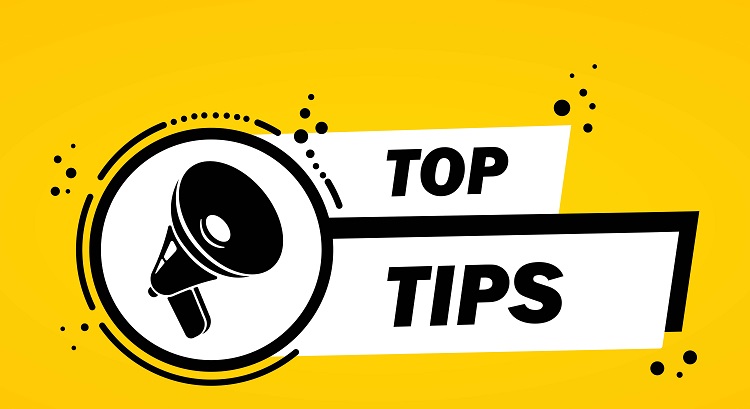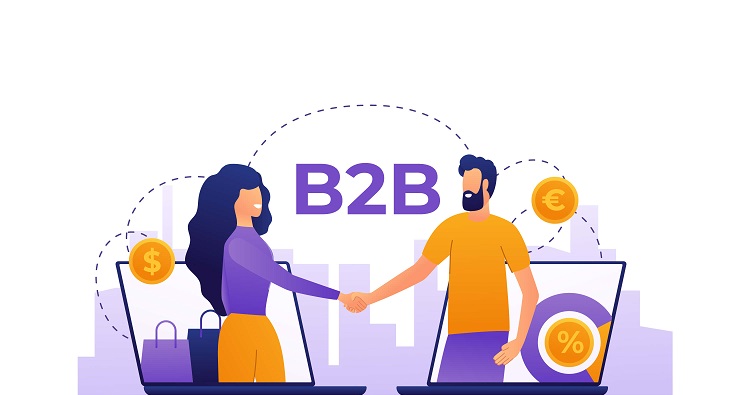Building your brand and encouraging consumers to check out your business depends entirely on your marketing reaching the right people.
In 2024, however, fewer consumers pay attention to traditional advertising, which is why developing strong, effective influencer marketing strategies is your key to a successful ad campaign.
Table of Contents
ToggleWhat is Influencer Marketing?
Influencer marketing utilizes the social influence of public figures, industry professionals, and career ‘influencers’ to promote the products and services of a business, targeting a specific demographic.
Influencer marketing is effective because few consumers now pay attention to conventional advertisements but listen instead to what social media influencers (on Instagram, Facebook, TikTok, YouTube, Twitch, Twitter, or Snapchat) have to say.
Tips for a Powerful Influencer Marketing Strategy 2024
Here are the most basic, fundamental tips for creating a powerful influencer marketing strategy across any platform.
Define Your Goals and Message
As with any conventional marketing campaign, your first step in any successful influencer marketing campaign is to define your goals.
Do you wish to simply create buzz about your brand, or do you have a more specific target in mind: perhaps selling X amount of a new product?
Create a timeline in which you wish to achieve these goals, and ensure that they are measurable, so you can determine the effectiveness of the campaign.
Lastly, settle upon a clear message you want the influencer to deliver to their audience.
In other words, what do you want customers to think or know about your business?

Decide on Budget and Influencer Type
Influencers do not work for free.
Indeed, many of the most successful career influencers can expect a six- or seven-figure paycheck for just a single sponsored post.
Influencers are simply people with quantifiable influence over a loyal following. That following can number in the millions, or in the hundreds.
It’s more important to reach a small number of interested and engaged consumers than it is to reach an enormous number of casual followers.
Influencers are categorized by the size of their influential reach and tend to charge around $100 per 10,000 followers per post.
- Nano-influencers (1,000-10,000 followers) could charge $100 per post
- Micro-influencers (10,000-50,000 followers) could charge $500 per post
- Macro-influencers (50,000-500,000 followers) could charge $5,000 per post
- Mega-influencers (500,000-1,000,000 followers) could charge $50,000 per post
- All Star-influencers (1,000,000+ followers) could charge $500,000 per post or more
Determine your Target Audience and Social Media Platform
Different influencers operate across different platforms, which often correspond to different target demographics.
Facebook and Twitter users, for example, tend to be in their late twenties or older, whilst TikTok users are predominantly teenagers and those in their twenties.
Similarly, Instagram is the best social media platform for sharing photographic/image-based advertisements, whilst YouTube or Twitch are preferable for video-led ones.
Choose carefully the target demographic for your influencer marketing campaign, and this will in turn lead you to the social media app most used by your target customers.
Find and Approach the Right Influencer(s)
Having determined the budget, message, goals, and target audience, it’s time to find and employ the influencers for your marketing campaign.
There are actually now influencer agencies you can approach to help match you with an appropriate influencer.
However, if you’d rather conduct the search yourself, here are the three main ways to do so:
- Research the social media engagement of your competitors to determine which influencers they are using, and how. This will help you to better identify your target pool of social media users.
- Search for posts containing the hashtag #sponsored and find a social media influencer whose aesthetic, style, or following is suited to your brand or business.
- Identify influencers through your own followers. Visit the social media profiles of customers who already follow your page, and look through their ‘Following’ lists to identify common influencers.
Measure Effectiveness and Adjust
Having implemented your four-step influencer marketing campaign, the final – and most important – step is to measure the success of the campaign.
Have you achieved your goals?
What was the engagement percentage compared to the reach of the influencer’s post (i.e. how many people saw the post versus how many interacted with it, and thus your brand)?
If the campaign was a success, then you should continue working with that influencer.
If not, then identify weak spots and adjust, approaching a different influencer (or set of influencers) and trying again.
Tips for an Advanced Influencer Marketing Strategy

If you’re looking to take your influencer marketing campaign to the next level, it’s worth considering employing these top tips.
Audience-Oriented Targeting for Higher Conversions
Any influencer marketing campaign requires that you identify your target audience.
However, there are ways that you can be even more specific about who you target and how.
Use the various insights and professional business tools on your social media channels (such as Facebook and Instagram) to identify specifics about your existing audience.
You can find information on your audiences such as their gender, age, interests, and more. Use this information to tailor your own content, as well as the influencer’s post.
Do so by learning to speak your audience’s language, reinforcing their interests and attitudes, and supporting their social stances.
(Are they environmentally minded? Tailor your products to also be environmentally friendly.)
Take a Multi-Channel Approach
Whilst most of your target demographic might use Facebook predominantly, thus leading you to approach Facebook influencers, there is always room for expansion.
A multi-channel approach exposes you to new pools of potential customers. If you’d like to reach both a young and old demographic, then approach both Facebook and TikTok influencers.
If you know that your audience enjoys gaming, but also fashion, then you might want to use influencers on both Twitch (a game-streaming platform) and Instagram (most popular among the fashion-conscious).
Focus on a Small Number of Niche Influencers
We know that the impulse is to reach out to as many influencers as you have the budget for, thus getting your message and products to as many people as possible.
However, you will be more successful if you engage a small number of individuals, genuinely passionate about your brand or business than if you reach millions of casual followers.
Maximize the cost efficiency and effectiveness of your influencer marketing strategy by approaching only a small number of key influencers working in your specific audience niche.
Tips for an In-House Social Media Marketing Strategy
It’s important to remember that, whilst influencers can reach people you may not be able to, your brand or business can also still exert influence over potential customers.
To do so, you must create a watertight marketing strategy for your own social media channels.
Define your Social Media Marketing Goals

As with influencer marketing strategies, you must first define your own goals when creating a marketing plan for your social media.
Do you want more followers? Do you wish to increase brand awareness among existing followers?
Are you aiming to cement a rebranding effort? Do you have a specific product, event, or service to promote?
And, of course, what level of engagement would you see as a success, and by when do you wish to achieve this?
Identify your Social Media Audience
Your social media content will only be effective as a marketing tool if it is tailored to the audience you wish to engage.
First, therefore, you must identify that audience.
You can identify a new target social media audience simply by determining a demographic based on your goals.
Alternatively, if you wish to engage an audience you already have, then you can determine their specific characteristics (age, sex, interests, location, etc.) by using insight tools available through your existing social media accounts.
Choose your Social Media Networks
There’s no point in promoting your brand content on TikTok if your target audience is mostly older, or not interested in dance crazes and memes.
Optimize your time and branding efforts by creating social media accounts on only the social platforms which your audience uses most.
Having identified your social media audience, you should now have a good idea of whether they are mostly Facebook and Instagram users, Snapchatters and TikTokers, or Twitter Tweeters and Twitchers.
Track your Competitors’ Social Media Engagement
Just as you would keep an eye on a competing café’s menu and window displays, for example, it is paramount that you track how your competitors use their own social media accounts.
Keep track of what works for them, and what doesn’t.
Who are they engaging with, and how?
You can maximize the potential of your own social media presence by learning from both your competitors’ successes and failures.
Establish a Social Media Budget
Running marketing campaigns on your own social media accounts doesn’t have to cost a penny.
However, spending a little can improve your success and engagement rates.
Most social media platforms allow you to pay to promote your content. Paid promotions are pushed to target audiences based on your follower demographics.
They can be an easy way to reach more people or increase engagement with existing customers.
Most social media platforms allow you to be flexible with your budget for such promotions, though the more you spend the more people you are likely to reach.
Establishing a social media budget may also include the salary of someone you decide to hire to run your social media marketing department.
Create Engaging Content Strategies Across your Networks
Consumers tend to ignore content that doesn’t in some way reflect or reinforce their interests and ambitions.
You can spend as much money as you like on paid promotions, but no one will click or tap on your posts unless they find them engaging.
Engage users by appealing to their interests, following current trends on social media (be it through the use of color, style, font, or format), and adding value to their day with aesthetically appealing, interesting, or insightful posts, rather than simply trying to push a sale on them.
You may also wish to create different content strategies to engage different demographics, so as to stretch your reach across a wider audience.
It’s also worthwhile linking your various social media accounts together, and cross-posting (posting the same content simultaneously on all platforms).
Doing so increases the chances of users following your brand or business on more than one app.
Collaborate with Non-Competing Brands

One of the fastest and most effective ways to grow your prospective customer base on social media is to collaborate with other brands and businesses that attract similar customers.
If you are a storytelling podcaster, for example, then you may wish to collaborate with another podcast that your audience also listens to.
Provided this other podcast doesn’t encroach on the type of content you produce, but purely on the audience, a collaborative social media marketing campaign would benefit you both.
Search around on social media for brands with a similar goal, message, or outlook to yours, and approach them with your collaboration ideas.
Make sure, however, that they are of a similar size to you.
Approaching a brand with many millions more followers than yourself may simply be a waste of your time.
Review Results and Refine Strategy
They say the definition of insanity is trying the same thing over and over and expecting different results.
Once your social media marketing campaign has run its course, review its results. Did you engage the number of consumers you had set a goal to?
Did you sell the stock or service you had aimed to? Was the event well-attended?
Based on the metrics by which you decided you would measure your success in the goal-setting stage, determine how best to refine your marketing strategy for next time.
Tips for an Effective B2B Influencer Marketing Strategy

B2B stands for “Business-to-Business.”
Whilst influencers in consumer-driven campaigns may come from the actual consumer pool, B2B influencers tend to be people who are themselves experts or specialists in the targeted professional area.
For example, consultants, government-backed regulators, and financiers.
Partner with Industry Experts
If offering a product to consumers in a B2C (“Business to Consumer”) business model, you need influencers who appeal to your target consumers.
The same principle applies to B2B marketing.
You want to work with influencers who are experts in your industry and who command respect from the customers you are hoping to attract.
You can research the LinkedIn profiles of the businesses you wish to do business with, in order to find potential influencers.
Similarly, you can search for relevant influencers by using hashtags on social media pertaining to your industry, or search the internet for bloggers and writers with a prominent platform.
Influencers whose word is trusted in your industry can inspire that same trust in your services.
Focus on Co-Creation
With B2B influencer marketing campaigns, it’s especially important to work with industry experts to develop content that meets their high standards, whilst simultaneously promoting your business.
Unlike B2C influencers, who you might simply pay to post a picture of them wearing or holding your product, B2B influencers are unlikely to be career influencers, but professionals with influence.
As such, you will have to first work with them (co-creating), to convince them that yours is a business or service worth promoting, and worth attaching their name to.
Organize Events to Develop Relationships
B2B influencer marketing requires that you form a deeper, more meaningful bond with your chosen influencers than in B2C influencer campaigns.
Organizing events to which you invite your chosen influencer(s) is an extremely effective means of inspiring confidence in them and strengthening your relationship with them.
Maybelline, the beauty company, presents a perfect example.
They held a Fashion Week in 2016 to which they invited industry fashion experts and influencers.
Not only were they providing these fashion bloggers and influencers with a valuable service (insight into Maybelline’s next line of products), but they were utilizing the market reach of these influencers, who then blogged and promoted Maybelline through their social media accounts.
Use Influencer UGC on your Website
UGC (user-generated content) is the content that influencers create and post on social media to promote your brand.
Used on your own website, it cements the interpersonal link between you, the influencer, and the audience.
Businesses, like consumers, tend to listen more to the testimonials of trusted industry experts and influencers over and above the native copy of your website.
When you co-create content with B2B influencers for them to post on social media, ask them if you may also post that content on your own website.
Doing so gives your B2B model a more personal, familiar, and thus trustworthy touch.
Tips for an Effective B2C Influencer Marketing Strategy

B2C stands for “Business-to-Consumer”.
You’ll need an effective B2C influencer marketing strategy if you sell products or services to the public rather than to other businesses.
Co-Create Visual Content
When working with influencers, it’s important that you get your brand or business’s message and aesthetic across to customers, as well as the actual item or service you’re promoting.
Work with influencers to co-create engaging content for social media.
This can mean a range of things. Sending influencers free samples of the products or services you wish them to promote, for example.
Working with them to ensure their post looks similar to the posts on your own social media platforms. Ensuring they use the appropriate tags and hashtags.
Sending them any image or other files they need to create the best visual content that mirrors your brand.
Plan Affiliate Programs
Affiliate marketing programs provide a longer-term incentive for influencers to work for you, motivating those already on your influencer campaign, and helping you to find new influencers, too.
Affiliate programs are programs through which influencers are paid a set amount of money for achieving certain goals (increasing sales, follower count, etc.).
If you want to increase sales of a certain product, for example, you could offer influencers a percentage cut of each sale that is made through their marketing efforts.
You can track these efforts by curating links to your online store that are specific to each influencer for them to use on their social media profiles.
Run Contests and Giveaways
Contests and giveaways give influencers a compelling reason to post about your brand or business.
Work with influencers to co-create visual posts promoting giveaway contests, and have them ask their followers to engage with your social media pages (be it through tags, follows, or likes) to enter a chance to win.
You could also give influencers specific discount codes with which their followers can buy your products at reduced rates for a short time.
Contests and giveaways can deliver fast and impressive boosts to customer engagement and brand awareness.
Ask Influencers for Reviews
Depending on the service or product you offer, asking influencers for reviews can be an incredibly affordable means of attracting new customers.
If you run a restaurant with a catchy name, for example, consider inviting local influencers in for a free meal on the condition that they then review your restaurant on their social media.
If you sell a unique product, offer to send influencers samples of the product for free, provided they then post about the product when they receive it.
This influencer marketing strategy is especially effective when employed across a large number of nano- or micro-influencer accounts since often you need to pay nothing more than the production and shipping costs.
Influencer Marketing vs Digital Marketing Strategy

Influencer campaign strategies utilize public figures, industry experts, and career influencers to raise brand awareness and promote certain products through third-party social media accounts.
Digital marketing, on the other hand, achieves the same effect, but through social media accounts run by the brand itself.
The most effective social media marketing strategies employ a mix of both.
You might be interested to check those related posts as well:
- Social Media Influencer Guide 2024 [Learn Digital Marketing]
- Top Generation Z Marketing Statistics 2024 [Facts and Trends]
- 15 Steps to Become an Instagram Influencer [2024 Guide]
FAQs
How does crowdsourcing influence marketing strategy?
Crowdsourcing is the process of reaching out to consumers and asking them to directly contribute to or comment on the products and services you offer.
It fosters a deep sense of brand loyalty since it shows that the business cares about, and acts on, the opinions of its customers.
What are examples of influencer marketing successes?
Nike uses its status to reach out to mega- and all-star influencers, sending them the newest Nike trainers, which these influencers then wear and show off in sponsored content.
Maybelline curated a fashion show in 2016 to which they invited influential bloggers and fashion industry experts, bringing their new fashion line to the world.
Is influencer marketing expensive?
Influencer marketing can suit almost any budget. There are millions of smaller influencers with loyal followings who will happily promote your brand or business at affordable rates.
You could even just offer a free trial of a service in return for an influencer’s review.
Is influencer marketing effective in 2024?
Influencer marketing is more effective now than it’s ever been, as the pool of influencers continues to grow and interest in conventional advertising drops.
In fact, influencer marketing is on-trend to continue growing and expanding in the coming years. It is arguably the most effective form of marketing in 2024.
Conclusion
No matter what industry you’re in – whether you are a business offering services to other businesses, an independent retailer selling products to the public, or a musician trying to grow brand awareness – influencer marketing is the key to your success in 2024 beyond.
Armed with our top tips on how to formulate and execute the most effective influencer marketing strategies, you’re bound to see a marked improvement in customer engagement.

